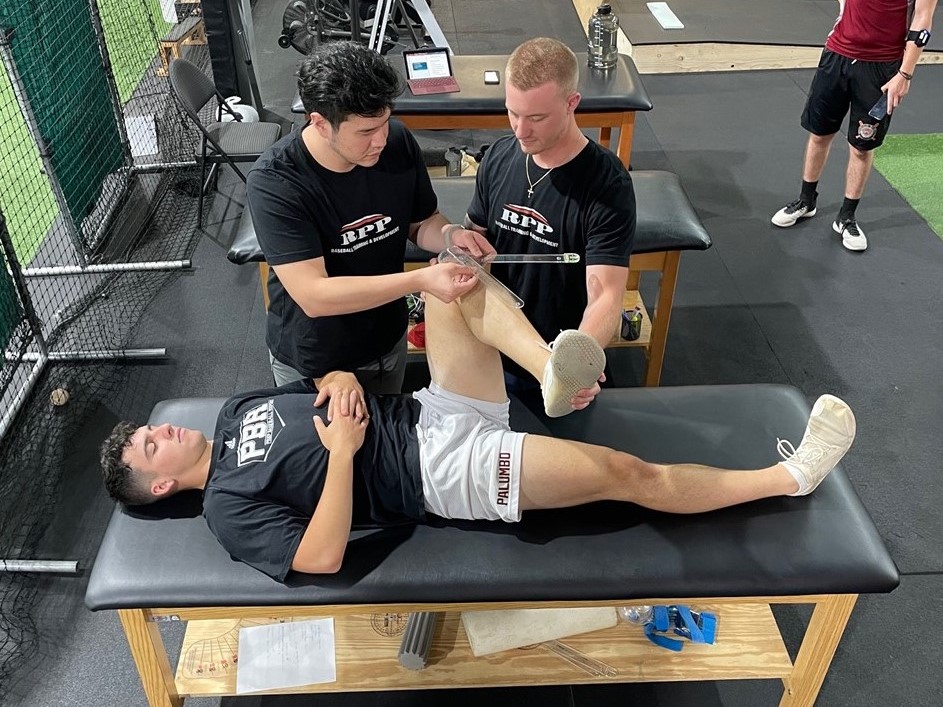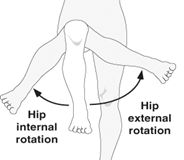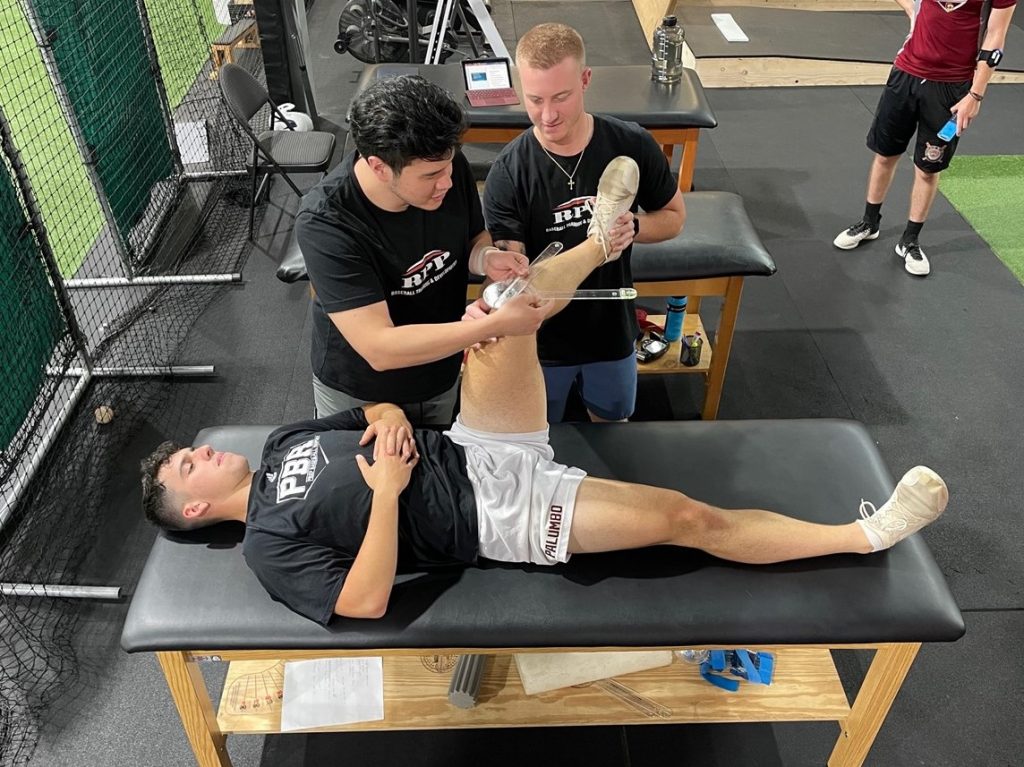
Improving arm health in pitchers is a topic which is typically viewed in reference to the arm itself rather than all the other parts of the body. This way of thinking can potentially lead to arm health issues. When assessing the lower half of a pitcher’s mechanics, often hip mobility issues surface and should be addressed. The purpose of this article is to help provide insight on how we initially assess hip mobility; common issues associated with a lack of hip mobility and ways to improve hip mobility issues. Understanding that fixing poor hip mobility is not an overnight fix is critical in helping the expectations of the progress that can be made if an athlete is consistent in their training.
What is Hip Mobility?
Hip mobility can be defined as the measurement of both Internal and External Rotation of the Hip Joint. The hip joint is a ball and socket joint that consists of the Femur and the Acetabulum. By our standards here at RPP, 70° of External Rotation and 35° of Internal Rotation are required to count as acceptable movement in our initial assessment. In this first part of a 2-part series, we will talk about hip internal rotation.

How Can Poor Hip Mobility (IR) Impact Arm Health?
Below is a summary of three primary areas of concern correlating poor Hip IR in the lead leg to potential arm health issues:
-
- Poor deceleration pattern
- Transfer of force to the upper half (post-up)
- Early lead leg action

Poor deceleration pattern – When an athlete does not possess the ability to continually rotate into their front hip after ball release, the shoulder and elbow have to slow down the arm rapidly (think of the arm slamming shut repeatedly). If an athlete can possess the proper internal rotation in their lead leg, it buys them more time to slow their arm down which will reduce the amount of stress being put on their shoulder or elbow.
Transfer of force to the upper half (post-up) – When an athlete cannot Internally rotate into their front hip, it presents a possible issue in the “transfer of force / post-up process”. Once foot plant occurs, the post-up process follows which is the beginning of transfer of force from the lower half to the upper half. Poor internal rotation into the front hip can put the hip in a sub-optimal position to accept force from the head of the femur resulting in a leak in that transfer of force. This can potentially leave velocity on the table. Along with video analysis, using a motion capture system identifying Lead Leg Angular Velocity is the most accurate way to determine an efficient versus an inefficient post-up.
Early lead leg action – The third and final area that can be associated with arm health and hip mobility issues is an early lead leg. An athlete that fails to remain closed and / or internally rotated, in their front hip will have the tendency to open their lead leg early. When this happens, the hips are rotated open causing an early trunk rotation to occur. As the trunk rotates typically the arm is lagging and playing catch up, this can cause an anterior glide of the humorous which wreaks havoc on an athlete’s arm over time. The potential for injury is dramatically increased due to how much stress is put on the posterior cuff repeatedly. Note: Many times, it can also be beneficial to change the way the athlete loads the back leg / shin to match limitations in hip mobility.
Improving Hip Mobility
There are many ways to improve hip mobility in athletes, but it is critical in understanding that it is not an overnight fix. Another important point is that it is the combination of both mobility and stability that creates good movement in an athlete. Listed below are four mobility drills that can aid in the improvement of hip mobility.
1. Hip Flow Circuit – One of our staple hip mobility drills that works on both External and Internal Rotation.
Cues:
-
- Front knee touching the floor
- Lift heel before opening back leg
- Do not rush
2. Prone Hip Rotator Stretch – Intended to stretch the external rotators of the hip to improve external rotation.
Cues:
-
- Maintain posterior tilt
- Keep hips square to body
- Place foot as far in front as allowed
3. Quadruped Hip Swivel – An isolation drill working on both External and Internal Rotation, while also stretching the adductors.
Cues:
-
- Keep body still only rotate your leg
- Weight forward
- Move through ROM slowly
4. Straight Leg Hip Turns – An isolation drill working on internal rotation into lead leg while also working on stabilization of the back leg.
Cues:
-
- Keep hips squared
- Internally rotate into lead leg
By Zach Kollar MS, CSCS (Strength and Conditioning Coach at RPP Baseball)
If you’d like to be placed on our email list please enter your email address below!

